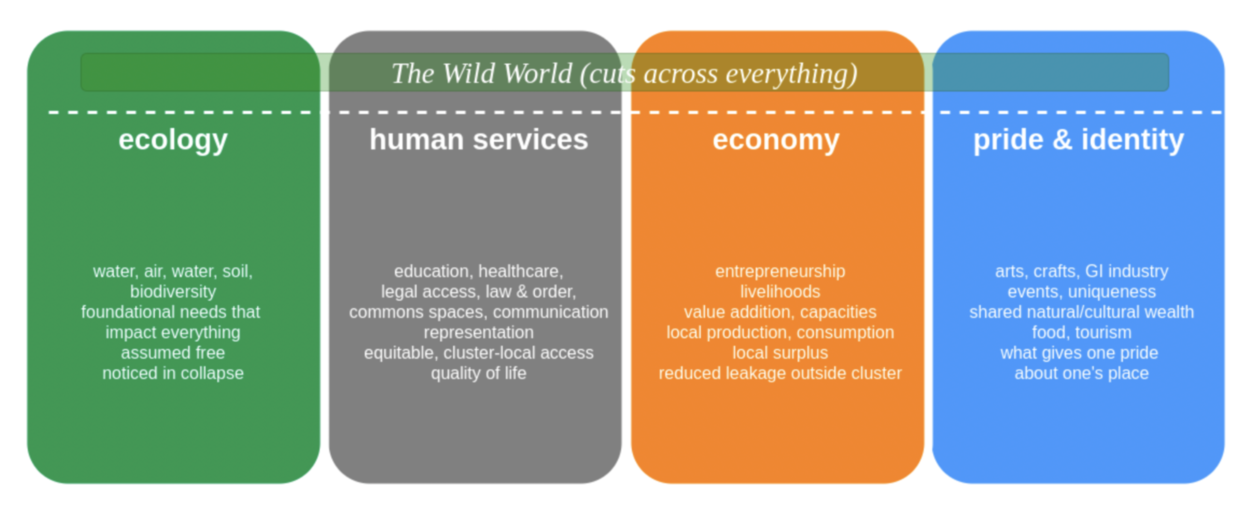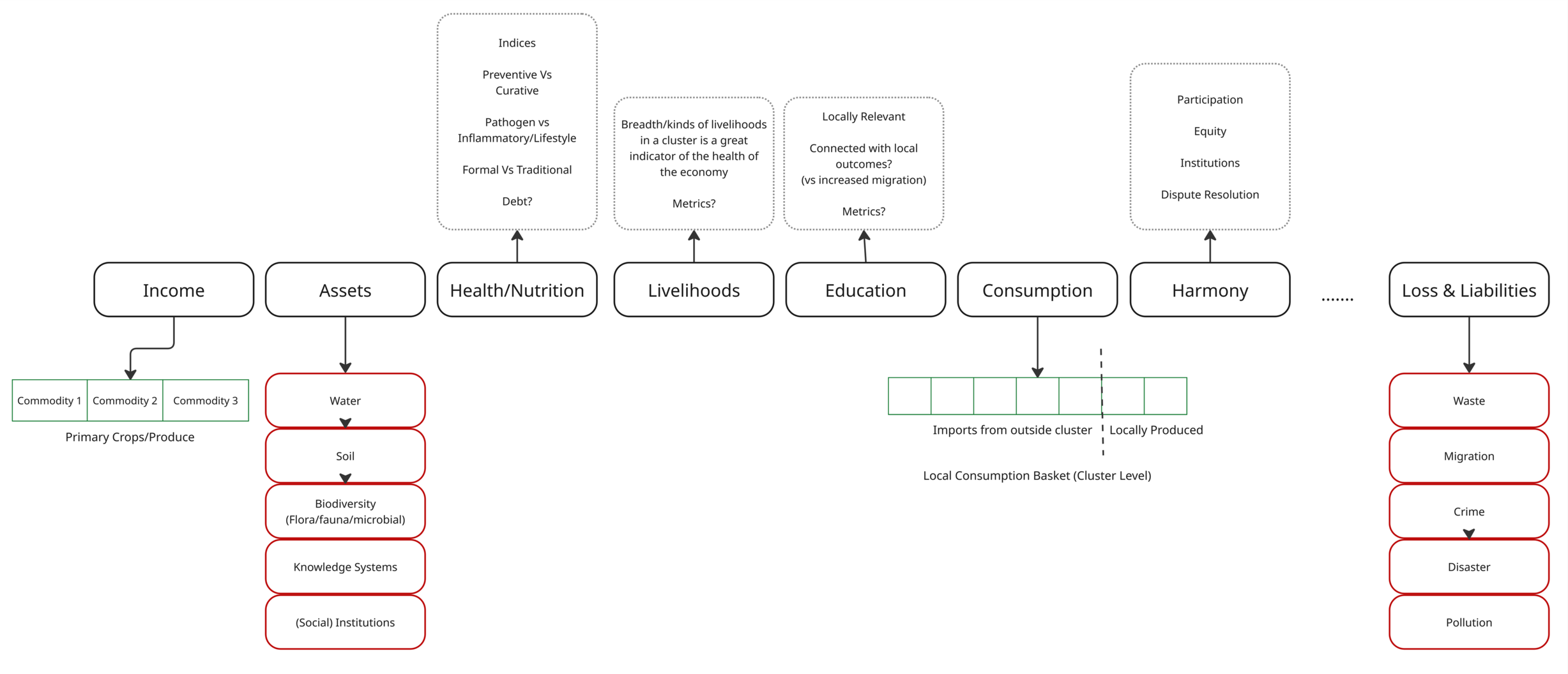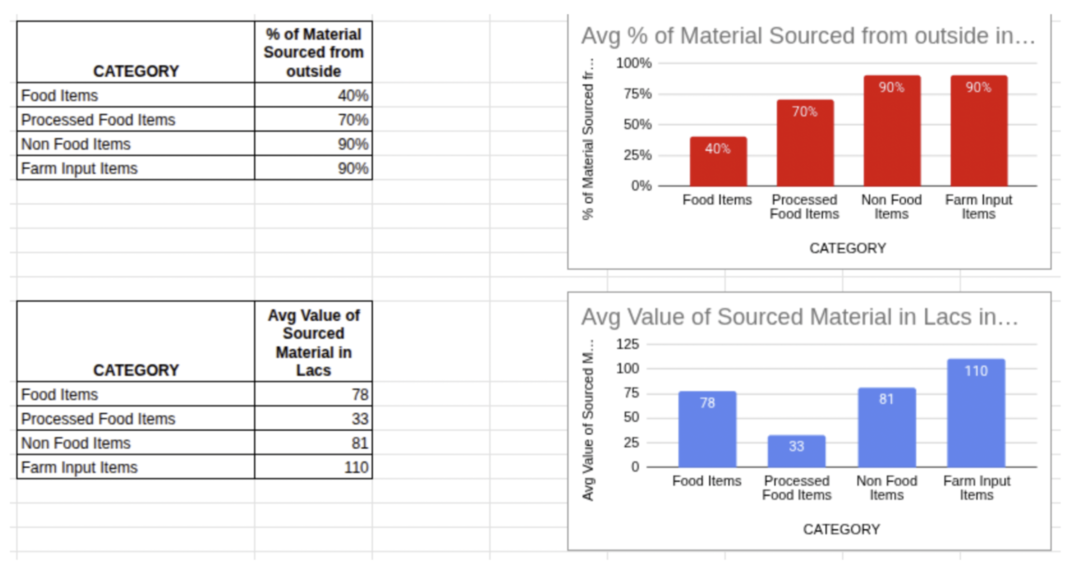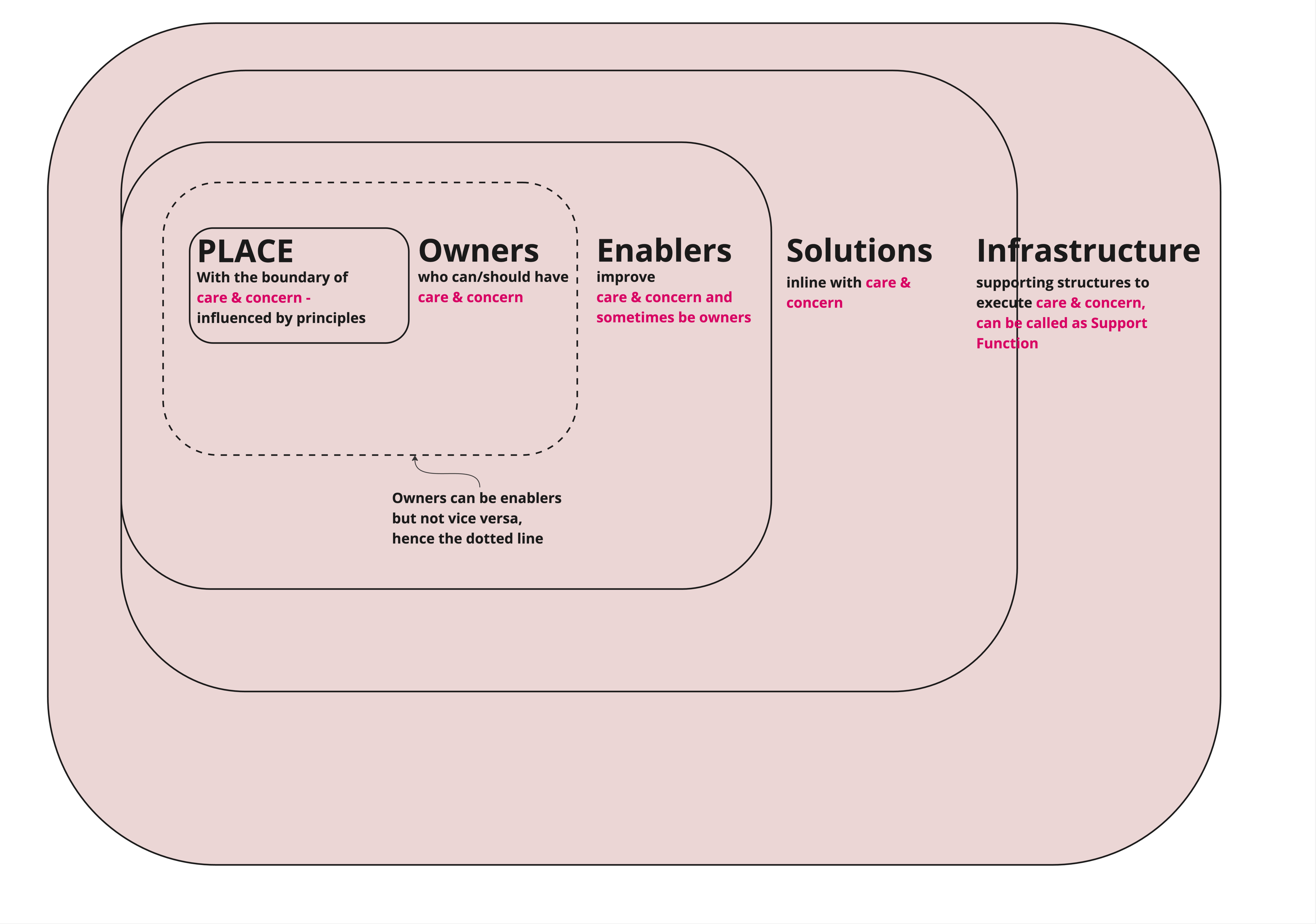The Place Lens: Care & Concern with Trade-offs
As a species we’re problem solvers. We solve problems at every level of society, multiple times every day. We make choices, and as we make those, we make trade-offs. Increasingly over the last few centuries we have done this in ever narrower silos and as specialists optimizing for “our” variables at the cost of many others.
For a bit now the dominant lens to view the world through has been through trade, GDP numbers and those that fuelled these - the market and economy view of things. A secondary lens has been around human benefit and services - accounting for the essentials, safety, education, etc. Ecology and our stories, identity and sense of pride and value have been the other invisible parts of this lens, and we’ve taken one for granted and exploited it for the other two without pause, and changed the other to justify everything we did. We ended up looking at the world in a rather distorted sense, eventually to our detriment.

We now know we have a planetary crisis. What does that mean? The world started off looking at it unidimensionally - through the symptom of temperature and the lens of carbon contributing to it. But much else has been going wrong, as we clearly know now. More recently, Johan Rockstrom and a team of researchers at the Stockholm Resilience Centre posited the Planetary Boundaries Framework to define a multidimensional safe operating space for humanity to operate in. And over time, the interconnections and feedback loops across these have started to emerge and become obvious. A few of these have so far made it into climate modelling and there’s still some way to go. This lens helps us understand the crisis, its various dimensions and manifestations.

Clearly, none of these have led us to understand our world better in ways and to an extent that have motivated us enough to act in ways that are needed at societal or civilizational scale. The daily, the mundane and the here and now take over, both at the level of the individual making choices and at the aggregates of these choices in markets and governance, and we lose sight of the larger realities we can no longer pretend to not be aware of and must address.
Perhaps the lens we need to view our planet is of those things that matter to us everyday. Food, incomes, jobs, the resources we depend on, the risks we face, etc. And the portion of the “planet” we all directly care about is the place we live and work in, where all these issues and variables manifest in real terms as entities and transactions around which we make decisions on a daily, running basis.
In summary, there are many possible lenses through which we can approach problem-solving, and the place-based approach is one such lens that centers solutions on the lived realities and priorities of local communities.
Thinking of Place through the Lived Realities Lens
Given that various actors have a different set of attributes in their boundary of care & concern that matter to outcomes they are seeking, it’s important to understand where we want to see the change in action, and who the actors are.
Many issues, especially second order effects or what we unthinkingly refer to as unintended consequences, are born in the trade-offs we make as we make daily decisions and choices for things we do in our places, in our professions and in our places.
If you think of your own body, or your own home, you’re managing all the variables all the time, and, given the right understanding and resources, are unlikely to make persistently bad trade-offs because you own it, across all of those variables. The various dimensions are another lens and help you manage it better.
Applying this lens in the Rural context, for a village cluster, what are the variables that matter? Here’s one set that we’ve discerned in our conversations and observations on the ground with both communities and partners.

The above is one way to think about the overall state of a village, or a panchayat, or perhaps an entire cluster, that accounts for dimensions that people focus on and care about in an everyday sense. The trade-offs are being made as various actors solve for one or the other of these dimensions, and impact multiple others negatively, over time weakening the entire rural living system.
Methods and processes that lead to a considered, well informed deliberation of the above village system, as a collective of owners of the place, and at a collective scale beyond the household, are critical to realize this and to start designing solutions that lead to better trade-offs and a stronger place overall. It’s only stronger places that will allow for stronger populations and better outcomes for all.
Lived Realities Framework: An Example
Variables that Matter to Villages and Clusters
A quick dive into each of these, and the interconnected impacts and outcomes one sees from working on them in isolation:
Incomes: Today, the income a village earns directly from production comes largely from farming, and that again is restricted to 2-3 primary crops in the region. (Indeed, we describe regions as “X growing” regions.) In doing this, and in trying to increase yields and incomes from those, more and more farmland is pushed into monocropping, often worsening soil health, stressing water tables and with ever heavier use of chemicals, eventually impacting health adversely.
Assets: One’s wellbeing and income potential tomorrow is to a large extent a function of one’s assets today. This is true of a village cluster as well - the assets being the health of its water, soil, air, biodiversity, knowledge systems and social systems around these commons, and skills. Over time, we’ve seen a tiny increase in income (accounting for inflation) from farming that has come at the huge cost of these assets - never a smart thing to do. Soil carbon is at 0.3% across the Deccan Plateau when it could easily be closer to 2.5-3%, water tables are down 70% or more, rivers and marine ecosystems are polluted heavily, the air quality across large parts of the country is terrible, many species of flora are rare or threatened - including those we used to derive medicine from. These are linked to worsened health outcomes, increased costs of farming, distress migration and other issues in the place.
The Local Consumption Basket: Understanding expense patterns is a critical part of the financial picture for anyone, and this holds true for the place as well - and more telling at the level of the Panchayat or a cluster of villages where the numbers really add up. From dipstick surveys, it is clear that rural spaces are buying a very large proportion (above 80-90%) of what they consume daily from elsewhere. This is at retail prices or higher which is a huge loss to the cluster, comes on the back of trucks and pickups and needs storage, packaging thus increasing the footprint of their consumption, and health issues from too much processed food and chemicals. The loss in variety of production is again linked to the loss in diversity at the farm, and in the wild from which many local needs were fulfilled. It also directly links to the loss of livelihoods in the clusters The spend numbers are quite staggering - 1.15 crores on biscuits in one case, a 1000 crore on mustard oil in a sub region in Eastern UP, 2.7 crores on broiler poultry in an average Panchayat in Kolar - the list is endless. Read together with the income from production, at or below commodity prices for 2-3 commodities, this represents a huge negative surplus for the place, and is a major underlying weakness linked to outward migration.

Health & Nutrition: There’s lifestyle diseases, malnutrition and other issues related to preventive health that are deeply connected with the quality of the commons, and the food systems locally.
Education: Is it locally relevant? Is it linked to livelihoods, self governance and other outcomes that education can solve positively for in the region? Without these linkages, will education not merely empty the place of all its youth capital - something we’re seeing across the country as place after place is considered a “retirement community” with just the older population left behind.
Harmony: Whether it’s along caste lines, or gender, or including the young folks or the landless in the ownership, decision making and solutioning of the place, it’s important to ponder the question of who in the village sees a positive future in their own place, and can the place be made stronger without most seeing that. Inclusive collectivization, institutions that help resolve and account for different points of view and opinions are all critical to stronger place-building.
Loss, Risk and Liabilities: As the village considers its situation, and plans a better future, it is important to account for immediate risks, plan for them and adapt to them the best one can. This should include both immediate disasters and long drawn out risks.
The framework posited above is one way of thinking of place through lived realities. We have seen others expressed in more traditional or colloquial ways that work well in the places they have evolved in. One such that really left an impression on us talks about the village’s quotients of the knowledge, the wisdom, the strength, the smartness of the village and its ability to help other villages around, as a collective! As we understand the above it’s evident that good overall outcomes for the village system are deeply linked to the strength of natural assets, biodiversity, diversity of skills and production and local, shorter supply chains; the longer and abstracted supply chains for even the basics cause immense harm on almost every front to most places, including socially and ecologically.
Moving to Place-Based Collective Action
Overall, it’s important to establish ownership / custodianship of the place in a holistic sense, equip the owners and local changemakers with tools and knowledge systems, including traditional ones, for a better understanding of the dimensions above as well as their linkages and the trade-offs one makes inadvertently, and make available a wide range of possible solutions they can pick from for starting to solve for issues they collectively prioritize.
Each layer exists as infrastructure in service of the next layer, responsively. The idea of the “project” ideally belongs to the owners, helped and aided by the enablers as needed, in service of place, and all the outer layers exist as or help build responsive infrastructure available to them.
POESI: A framework for collective action with place at its center

In the above, it’s useful to see change as shifts for each role and actor. We need the idea and definition of a place expressed through the lived realities of its residents and owners itself emerging as a wide consensus. We need ownership to start resembling good custodianship through a deeper understanding of place. Organizations and actors who are embedded in place and work for it holistically have a major role to play in these shifts, and have to keep their identities as solution providers for the few things they bring as expertise separate from this role. Solution providers themselves must imagine and work towards wider availability to every changemaker in place rather than a lock-in restricting their knowledge and skills to just their project areas. And finally, the support layer - governments, funders, data and research folks - where a lot of the decisions are taken today need to start playing an enabling role for and in service of all of the other actors, and back away from the urge to define the specific projects a village cluster or changemaker needs.
Good, lasting change to create stronger places will come from this sort of an approach, not outside in one time interventions. The outside world can be in support of, and responsive to this process, and true scale lies in this approach, not replicating any one set of solutions everywhere without ground up motivation, understanding or a buy-in.
